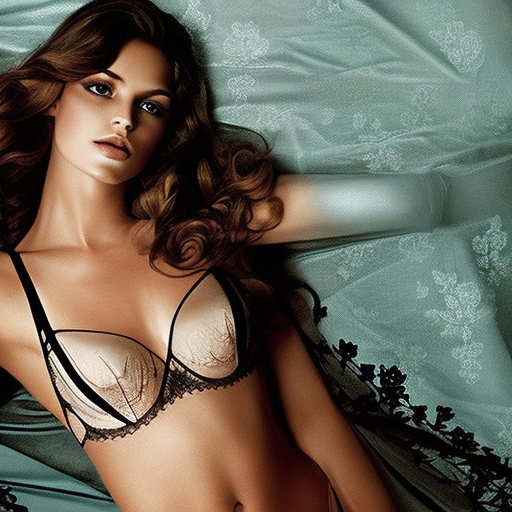Lingerie: A Comprehensive Overview
Lingerie is a form of intimate apparel that has evolved over centuries to become a symbol of sensuality, empowerment, and self-expression. From its humble beginnings as functional undergarments to its current status as a fashion statement, lingerie has played a significant role in shaping societal norms and perceptions of beauty.
The Evolution of Lingerie
Lingerie has a rich history that dates back to ancient civilizations. In ancient Egypt, women wore linen loincloths and bandages to support and shape their bodies. The Greeks and Romans also used similar undergarments made from linen or silk. However, it was during the Renaissance period that lingerie began to take on a more decorative and luxurious form, with the introduction of corsets and stays.
During the Victorian era, corsets became a staple of women’s fashion. These tightly laced garments were designed to cinch the waist and create an hourglass figure. However, they were also criticized for their restrictive nature and potential health risks. In the early 20th century, the corset was gradually replaced by the brassiere, which offered more comfort and freedom of movement.
The Role of Lingerie in Society
Lingerie has always been closely tied to societal ideals of beauty and femininity. In the 1920s, the flapper movement challenged traditional notions of modesty, and lingerie became more daring and revealing. The 1950s saw the rise of the pin-up girl, with lingerie becoming a symbol of allure and seduction.
In recent decades, lingerie has taken on a more inclusive and diverse role. Brands have embraced body positivity and catered to a wider range of sizes and shapes. Lingerie has become a tool for self-expression, allowing individuals to embrace their unique style and celebrate their bodies.
The Different Types of Lingerie
Lingerie encompasses a wide range of garments, each serving a different purpose and aesthetic. Some of the most common types of lingerie include:
- Bra and Panty Sets: These are the foundation of most lingerie collections. They come in various styles, such as balconette, push-up, and thong, catering to different preferences and body types.
- Corsets and Bustiers: These garments are designed to shape and enhance the waist and bust. They often feature boning and lace-up details for a more structured look.
- Teddies and Bodysuits: These one-piece garments combine the functionality of a bra and panties with the allure of a bodysuit. They come in a variety of styles, from sheer and lacy to more modest designs.
- Chemises and Babydolls: These loose-fitting, lightweight garments are often made from satin or silk. They are designed to be comfortable and flattering, with delicate details such as lace and bows.
- Stockings and Garters: These accessories add a touch of elegance and sensuality to any lingerie ensemble. They are typically worn with a garter belt to hold them in place.
The Future of Lingerie
As society continues to evolve, so does lingerie. The industry has embraced technological advancements, with the introduction of innovative fabrics and designs. Brands are now focusing on sustainability and ethical production, using eco-friendly materials and fair labor practices.
In addition, lingerie is becoming more inclusive, with a growing emphasis on diverse representation in advertising and marketing campaigns. Body-positive movements have challenged traditional beauty standards, leading to a greater acceptance and celebration of all body types.
In conclusion, lingerie has come a long way from its functional origins to becoming a powerful symbol of self-expression and empowerment. Its evolution reflects the changing attitudes towards beauty, femininity, and societal norms. With its diverse range of styles and designs, lingerie continues to captivate and inspire individuals to embrace their unique beauty and sensuality.












